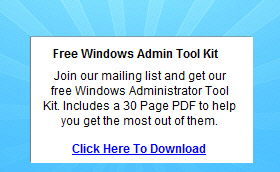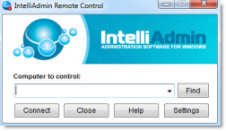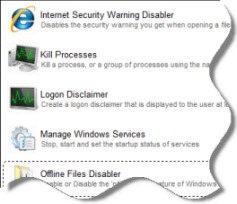Assuming your application is created correct, the following works for me (following the application creation). It doesn't really build on the example you're giving, but I'm sure it can be adapted to your code.
(After completing the code examples I see it's really a lot of code. I hope you can pull out something useful from it...)
public static void AddDeploymentType(WqlConnectionManager connection, SMS_Application application, string msiFile, string msiInstallCommand, string msiUninstallCommand)
{
IResultObject outParams = connection.ExecuteMethod("SMS_Identification", "GetSiteID", null);
string scopeID = "ScopeId_" + outParams["SiteID"].StringValue.Substring(1, 36);
string fileName = msiFile.Substring(msiFile.LastIndexOf("\\") + 1);
string path = msiFile.Substring(0, msiFile.LastIndexOf("\\") + 1);
Application app = SccmSerializer.DeserializeFromString(application.SDMPackageXML, true);
DeploymentType deploymentType = CreateDeploymentType(scopeID, path, fileName);
MsiInstaller installer = CreateInstaller(path, fileName, app, msiInstallCommand, msiUninstallCommand);
Content content = CreateContent(path, fileName);
installer.Contents.Add(content);
deploymentType.Installer.CopyFrom(installer);
app.DeploymentTypes.Add(deploymentType);
string appXml = SccmSerializer.SerializeToString(app, true);
IResultObject ro = connection.GetInstance("SMS_Application.CI_ID=" + application.CI_ID.Value);
ro["SDMPackageXML"].StringValue = appXml;
ro.Put();
}
private static DeploymentType CreateDeploymentType(string scopeID, string msiPath, string msiFileName)
{
MsiContentImporter msi = new MsiContentImporter();
msi.OpenMsi(msiPath + msiFileName);
string deploymentTypeDescription = "Windows Installer (Native)";
ObjectId deploymentTypeId = new ObjectId(scopeID, "DeploymentType_" + Guid.NewGuid().ToString());
DeploymentType deploymentType = new DeploymentType(deploymentTypeId, MsiInstaller.TechnologyId);
deploymentType.Title = msi.ReadProperty("ProductName") + " - " + deploymentTypeDescription;
deploymentType.Version = 1;
return deploymentType;
}
This includes an enhanced detection method, but can easily be striped down to just the product code.
public static MsiInstaller CreateInstaller(string msiPath, string msiFileName, Application app, string msiInstallCommand, string msiUninstallCommand)
{
MsiContentImporter msi = new MsiContentImporter();
msi.OpenMsi(msiPath + msiFileName);
string msiProductCode = msi.ReadProperty("ProductCode");
string msiVersion = msi.ReadProperty("ProductVersion");
string msiProductName = msi.ReadProperty("ProductName");
MsiInstaller installer = new MsiInstaller();
installer.ProductCode = msiProductCode;
installer.SourceUpdateProductCode = msiProductCode;
installer.InstallCommandLine = msiInstallCommand;
installer.UninstallCommandLine = msiUninstallCommand;
installer.ExecutionContext = Microsoft.ConfigurationManagement.ApplicationManagement.ExecutionContext.System;
//installer.DetectionMethod = DetectionMethod.ProductCode
EnhancedDetectionMethod edm = new EnhancedDetectionMethod();
MSISettingInstance msiSI = new MSISettingInstance(installer.ProductCode, null);
msiSI.LogicalName = "MSI_" + Guid.NewGuid().ToString();
msiSI.IsPerUser = false;
msiSI.ProductCode = installer.ProductCode;
msiSI.Annotation.DisplayName = new Microsoft.SystemsManagementServer.DesiredConfigurationManagement.Rules.LocalizableString("DisplayName") { Text = "" };
msiSI.Annotation.Description = new Microsoft.SystemsManagementServer.DesiredConfigurationManagement.Rules.LocalizableString("Description") { Text = "" };
edm.Settings.Add(msiSI);
Microsoft.SystemsManagementServer.DesiredConfigurationManagement.Rules.Annotation annotation = new Microsoft.SystemsManagementServer.DesiredConfigurationManagement.Rules.Annotation();
annotation.DisplayName = new Microsoft.SystemsManagementServer.DesiredConfigurationManagement.Rules.LocalizableString("DisplayName") { Text = "" };
annotation.Description = new Microsoft.SystemsManagementServer.DesiredConfigurationManagement.Rules.LocalizableString("Description") { Text = "" };
Microsoft.SystemsManagementServer.DesiredConfigurationManagement.Expressions.SettingReference reference = new Microsoft.SystemsManagementServer.DesiredConfigurationManagement.Expressions.SettingReference(app.Scope, app.Name, 1, msiSI.LogicalName, Microsoft.SystemsManagementServer.DesiredConfigurationManagement.Expressions.DataType.Version, ConfigurationItemSettingSourceType.MSI, true, ConfigurationItemSettingMethodType.Value, "ProductVersion");
Microsoft.SystemsManagementServer.DesiredConfigurationManagement.Expressions.ConstantValue constant = new Microsoft.SystemsManagementServer.DesiredConfigurationManagement.Expressions.ConstantValue(msiVersion, Microsoft.SystemsManagementServer.DesiredConfigurationManagement.Expressions.DataType.Version);
Microsoft.SystemsManagementServer.DesiredConfigurationManagement.Expressions.Expression expression = new Microsoft.SystemsManagementServer.DesiredConfigurationManagement.Expressions.Expression(Microsoft.ConfigurationManagement.DesiredConfigurationManagement.ExpressionOperators.ExpressionOperator.IsEquals, new CustomCollection<Microsoft.SystemsManagementServer.DesiredConfigurationManagement.Expressions.ExpressionBase> { reference });
expression.Operands.Add(constant);
Microsoft.SystemsManagementServer.DesiredConfigurationManagement.Rules.Rule rule = new Microsoft.SystemsManagementServer.DesiredConfigurationManagement.Rules.Rule("Rule_" + Guid.NewGuid().ToString(), Microsoft.SystemsManagementServer.DesiredConfigurationManagement.Rules.NoncomplianceSeverity.Informational, annotation, expression);
edm.Rule = new Microsoft.SystemsManagementServer.DesiredConfigurationManagement.Rules.Rule("Rule_" + Guid.NewGuid().ToString(), Microsoft.SystemsManagementServer.DesiredConfigurationManagement.Rules.NoncomplianceSeverity.Informational, annotation, expression, app.Scope, app.Name, 1);
installer.EnhancedDetectionMethod = edm;
installer.DetectionMethod = DetectionMethod.Enhanced;
return installer;
}
public static Content CreateContent(string msiPath, string msiFileName)
{
ContentFile contentFile = new ContentFile();
contentFile.Name = msiFileName;
Content installerContent = new Content();
installerContent.Location = msiPath;
installerContent.Files.Add(contentFile);
installerContent.FallbackToUnprotectedDP = true;
installerContent.OnSlowNetwork = ContentHandlingMode.Download;
installerContent.OnFastNetwork = ContentHandlingMode.Download;
return installerContent;
}
Then add the content to a distribution point:
string packageID = GetPackageID(connection, application.ModelName);
AddDistributionPoint(connection, distributionPointResource.SiteCode, distributionPointResource.NALPath, packageID);
public static string GetPackageID(WqlConnectionManager connection, string modelName)
{
string retval = "";
string query = "SELECT PackageID FROM SMS_ObjectContentInfo WHERE ObjectID='" + modelName + "'";
IResultObject ro = connection.QueryProcessor.ExecuteQuery(query);
if (ro != null)
{
foreach (IResultObject item in ro)
{
if (item != null)
retval = item["PackageID"].StringValue;
break;
}
}
return retval;
}
public static void AddDistributionPoint(WqlConnectionManager connection, string siteCode, string nalPath, string packageID)
{
IResultObject ro = connection.GetInstance(@"SMS_ContentPackage.PackageID='" + packageID + "'");
Dictionary<string, object> parameters = new Dictionary<string, object>();
parameters.Add("SiteCode", new string[] { siteCode });
parameters.Add("NALPath", new string[] { nalPath });
ro.ExecuteMethod("AddDistributionPoints", parameters);
}
CreateDeployment(connection, application, installCollection, "Install", 1);
CreateDeployment(connection, application, uninstallCollection, "Uninstall", 2);
private static void CreateDeployment(WqlConnectionManager connection, SMS_Application application, SMS_Collection collection, string action, UInt32 desiredConfigType)
{
SMS_ApplicationAssignment assignment = new SMS_ApplicationAssignment();
assignment.ApplicationName = application.LocalizedDisplayName;
assignment.AssignedCI_UniqueID = application.CI_UniqueID;
assignment.AssignedCIs.Add((Int32)application.CI_ID.Value);
assignment.AssignmentName = application.LocalizedDisplayName + "_" + collection.Name + "_" + action;
assignment.CollectionName = collection.Name;
assignment.DisableMomAlerts = true;
assignment.NotifyUser = false;
if (action == "Install")
{
assignment.OfferFlags = 1;
assignment.DesiredConfigType = 1;
}
if (action == "Uninstall")
{
assignment.OfferFlags = 0;
assignment.DesiredConfigType = 2;
}
assignment.OverrideServiceWindows = false;
assignment.RebootOutsideOfServiceWindows = false;
assignment.SuppressReboot = 0;
assignment.TargetCollectionID = collection.CollectionID;
assignment.UseGMTTimes = false;
assignment.UserUIExperience = false;
assignment.WoLEnabled = false;
assignment.LocaleID = 1033;
assignment.Create(connection);
}
public void Create(WqlConnectionManager connection)
{
DateTime currentTime = DateTime.Now;
IResultObject newApplicationAssignment = connection.CreateInstance("SMS_ApplicationAssignment");
newApplicationAssignment["ApplicationName"].StringValue = this.ApplicationName;
newApplicationAssignment["AssignedCI_UniqueID"].StringValue = this.AssignedCI_UniqueID;
newApplicationAssignment["AssignedCIs"].IntegerArrayValue = this.AssignedCIs.ToArray();
newApplicationAssignment["AssignmentName"].StringValue = this.AssignmentName;
//newApplicationAssignment["AssignmentUniqueID"].StringValue = newDeploymentInfo["DeploymentID"].StringValue;
newApplicationAssignment["CollectionName"].StringValue = this.CollectionName;
newApplicationAssignment["DisableMomAlerts"].BooleanValue = this.DisableMomAlerts;
newApplicationAssignment["EnforcementDeadline"].DateTimeValue = currentTime;
newApplicationAssignment["NotifyUser"].BooleanValue = this.NotifyUser.Value;
newApplicationAssignment["OfferFlags"].LongValue = this.OfferFlags;
newApplicationAssignment["DesiredConfigType"].LongValue = this.DesiredConfigType.Value;
newApplicationAssignment["OverrideServiceWindows"].BooleanValue = this.OverrideServiceWindows.Value;
newApplicationAssignment["RebootOutsideOfServiceWindows"].BooleanValue = this.RebootOutsideOfServiceWindows.Value;
newApplicationAssignment["RequireApproval"].BooleanValue = this.RequireApproval;
newApplicationAssignment["StartTime"].DateTimeValue = currentTime;
newApplicationAssignment["SuppressReboot"].LongValue = this.SuppressReboot.Value;
newApplicationAssignment["TargetCollectionID"].StringValue = this.TargetCollectionID;
newApplicationAssignment["UseGMTTimes"].BooleanValue = this.UseGMTTimes.Value;
newApplicationAssignment["UserUIExperience"].BooleanValue = this.UserUIExperience;
newApplicationAssignment["WoLEnabled"].BooleanValue = this.WoLEnabled.Value;
newApplicationAssignment["LocaleID"].LongValue = this.LocaleID.Value;
newApplicationAssignment.Put();
}


